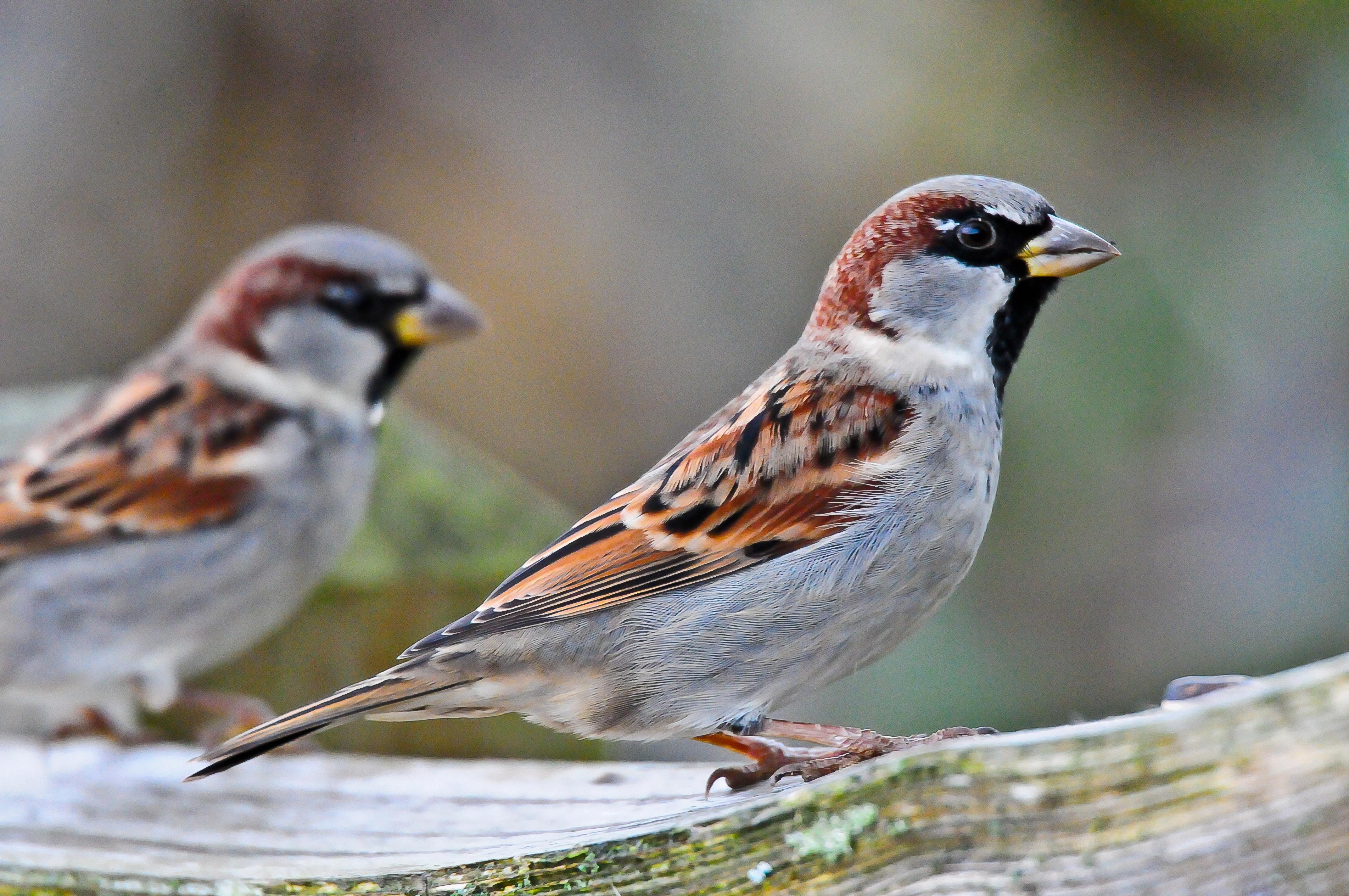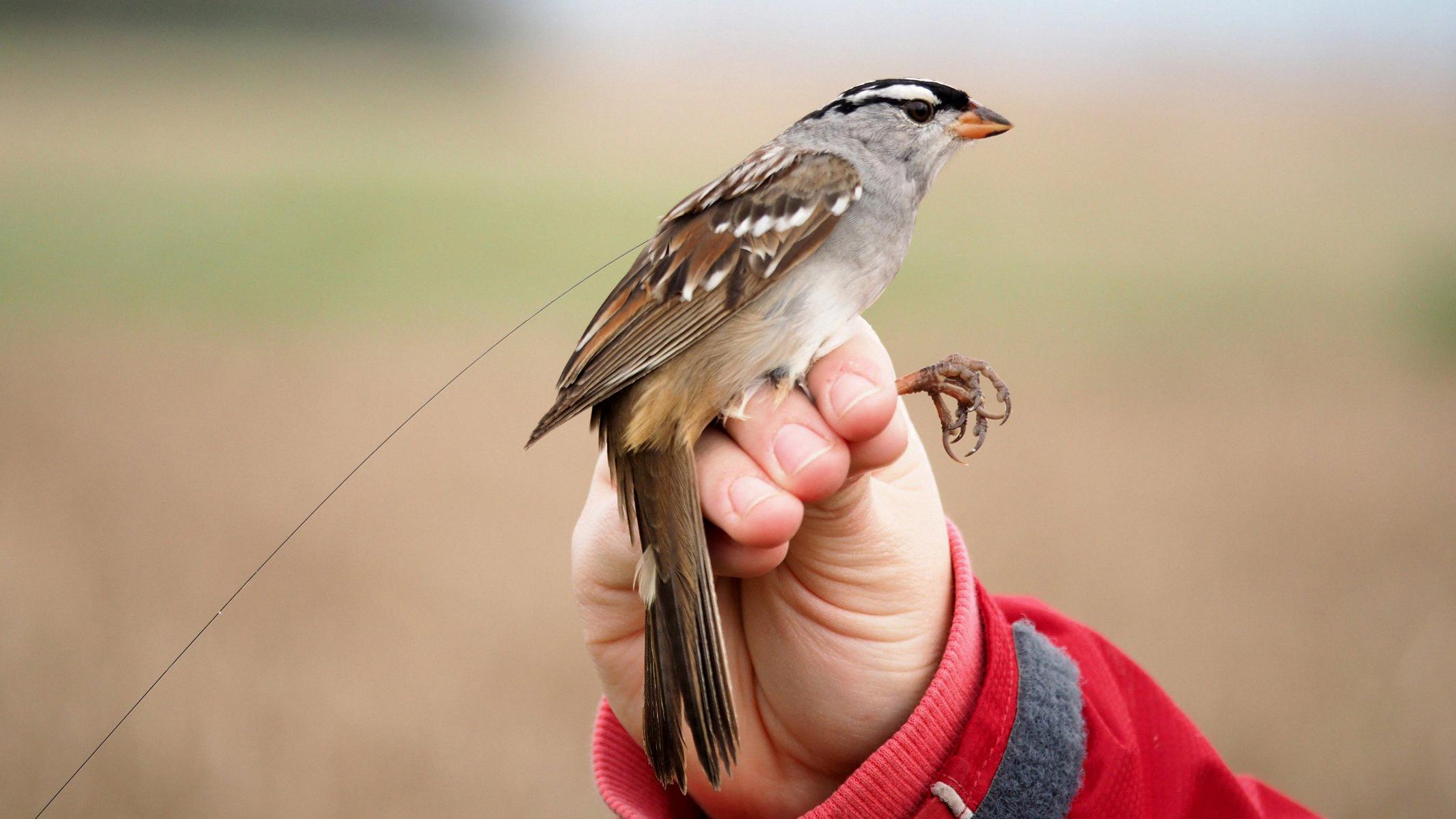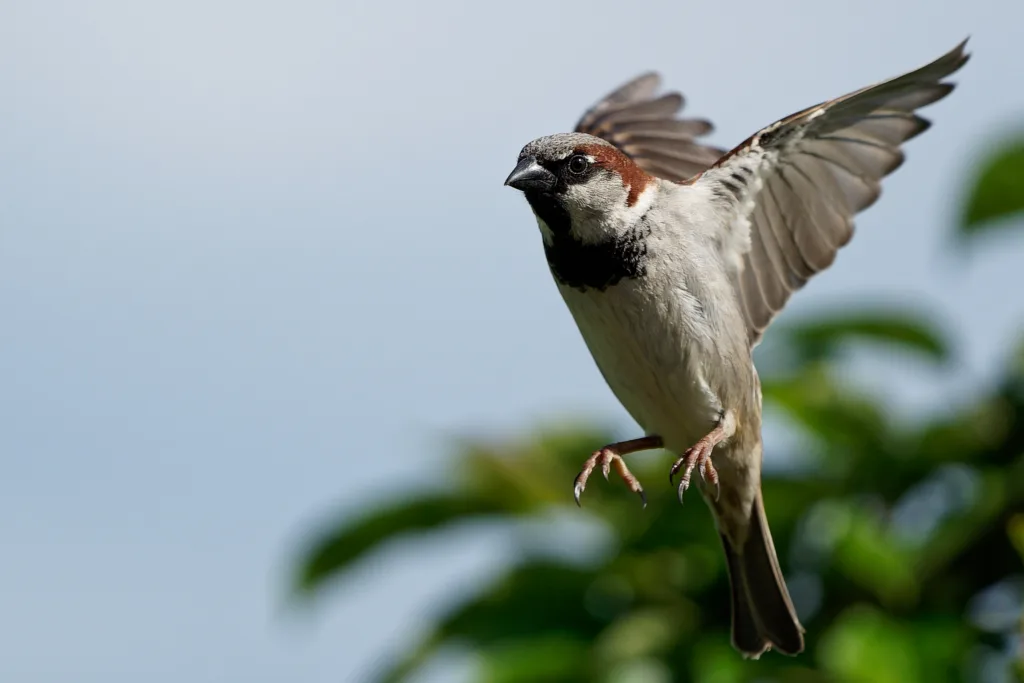Sparrows are a common sight in many backyards across the world. These small, plucky birds have become beloved for their cheerful chirps and their tenacity in the face of winter weather. But have you ever wondered if sparrows migrate? Well, the answer is not as straightforward as you might think.
Firstly, it’s important to understand that there are many different types of sparrows, each with their own unique behaviors. However, in general, sparrows are considered to be non-migratory birds. This means that they do not undertake long-distance seasonal movements like other birds such as swallows or geese.
Instead, sparrows tend to stay relatively close to their breeding grounds throughout the year. Studies have shown that most sparrows stay within a radius of 1 ¼ miles during the nesting period and don’t fly more than 5 miles from their original nesting sites to form their own territories. That means if you are seeing sparrows establishing territories around your property, they most lkely intend to stay.
However, this doesn’t mean that sparrows are completely stationary. They may make small movements within their local area in search of food or water, especially during harsh winter weather when resources may be scarce. Additionally, some sparrows may move to slightly different habitats or altitudes depending on the season. For example, some species of sparrows may move to higher elevations during the breeding season to take advantage of cooler temperatures and more abundant food sources.
It’s also worth noting that while most sparrows do not migrate, there are a few exceptions. For example, the Rufous-collared Sparrow, which is found in South America, is known to undertake short-distance seasonal movements in search of food and breeding opportunities.
While most sparrows do not migrate in the traditional sense, they are still highly adaptable birds that are able to adjust their behavior and movements to suit their changing needs throughout the year. So, the next time you see a sparrow flitting around your yard, remember that it may have a few tricks up its sleeve that you haven’t yet discovered!
Do Sparrows Remain in the Same Location Year-Round?
Yes, house sparrows typically stay in one area all year round. Unlike many native songbirds that migrate to different regions during the winter months, house sparrows do not migrate and remain in the same general area throughout the year. This is because they are well adapted to living in urban and suburban environments, where food and shelter are readily available. In fact, house sparrows strongly prefer to nest near buildings, which provide them with ample shelter and food sources. So, if you see sparrows in your area during the winter, chances are they will be there all year round.

Source: commons.wikimedia.org
Are Sparrows Winter Birds?
Yes, sparrows are winter birds and they are actully quite common during the snowy season. Many species of sparrows are able to withstand colder temperatures and are able to find food even when snow covers the ground. In fact, some species of sparrows such as the American Tree Sparrow are only found in North America during the winter months. You may see sparrows visiting your backyard bird feeder during the winter months as they search for food and shelter from the cold weather. However, it’s important to note that some species of sparrows may migrate to warmer climates during the winter, so their presence in your area during the winter months may depend on where you live.
Do Sparrows Remain in the Same Area?
Yes, studies have shown that sparrows tend to stay within a cetain radius during their nesting period, usually not venturing more than 5 miles from their original nesting site to establish their own territories. This means that if you are seeing sparrows around your property, there is a good chance that they intend to stay in the same area. It’s important to note that not all sparrows behave in the same way, and some may travel further distances depending on various factors such as food availability and competition for resources. However, in general, sparrows are known to be relatively sedentary and tend to stay in the same general area during their nesting season.
Survival Strategies of House Sparrows During Winter
House sparrows are a common bird species that can be found in cities and towns throughout the year. During the winter months, these birds typically form large flocks and seek out shelter from the cold weather. They are known to nest in buildings, vents, street signs, and awnings, whee they can find warmth and protection from the elements. House sparrows are also opportunistic feeders and will scavenge for food in urban areas, including bird feeders and outdoor dining areas. In addition, they may migrate to milder climates in some regions, but this is less common among urban populations. Overall, house sparrows are adaptable birds that have developed strategies to survive the challenges of winter in urban environments.
Do Sparrows Sleep in the Same Place Every Night?
Sparrows, like most bird species, do not sleep in the same place every night. They usually roost in different locations to avoid predators, conserve energy, and find the most comfortable place to sleep. Sparrows are known to roost in trees, shrubs, bushes, and even on the ground, depending on the availability of suitable roosting sites. They may also change roosting locations depending on the season, weather conditions, and availability of food and water. Overall, sparrows are highly adaptable and resourceful birds that can quickly adjust their roosting habits as needed to ensure their survival.

Source: pbs.org
The Mystery of the Missing Sparrows
There could be several reasons why your sparrows have disappeared. One possibility is that they have migrated to aother location. Many bird species, including sparrows, migrate during certain times of the year to find better food and breeding opportunities. Another possibility is that there has been a change in their habitat. Sparrows are known to live in small bushes and shrubs, and if those have been removed or destroyed, they may not have a suitable place to live. Additionally, predators such as cats, hawks, and snakes could be preying on the sparrows, causing them to leave the area for safety. Lastly, there could be a shortage of food in the area, particularly during the breeding season when sparrows need a lot of food to care for their young. It’s important to note that many factors can influence bird populations, and it’s best to consult with a local bird expert or wildlife organization for more specific information.
Where Do Sparrows Go During the Winter Nights?
Sparrows are small, active birds that are found in many parts of the world. During the winter months, when the temperatures drop and the days get shorter, sparrows need to find a warm and safe place to spend the night. Typically, sparrows will seek out sheltered areas such as the gap between loose bark and tree trunks, natural cavities, or ones they have carved out themselves. In addition, they may also use hedgerows, thick vegetation, vines, and creepers on buildings or availabe roof spaces to keep warm. These areas provide a safe haven from predators and the harsh winter weather. Therefore, sparrows have adapted to survive in these conditions by seeking out suitable shelter to spend their nights in the winter.
Do Sparrows Migrate For The Winter?
Yes, sparrows do fly away for the winter. Migratory sparrows, like many other bird species, make a long journey south to find warmer weather and more abundant food sources during the cold winter months. Sparrows that breed in high altitudes often migrate to lower altitudes, were they can find more suitable conditions for survival. Non-migratory sparrows, on the other hand, will typically stay in their breeding territory, but they will seek out a warm, sheltered spot that is shielded from the winter elements, such as under dense vegetation or in tree cavities. Overall, the winter survival strategy of sparrows varies depending on the species and their geographic location, but migration is a common strategy for many sparrows during the winter months.
Do Sparrows Return to the Same Place Yearly?
Yes, sparrows are known to come back to the same place every year. They are considered to be resident birds, which means they do not migrate and stay in the same area all year round. Sparrows have a strong attachment to their nesting sites and will return to the same location year ater year to build their nests and raise their young. They are also known to have a strong homing instinct, which allows them to find their way back to their nesting sites even after being away for some time. This behavior is common among many bird species, and it helps them to establish territories and ensure that they have a reliable source of food and shelter.

Source: audubon.org
Do Sparrows Show Recognition of Humans?
Research suggests that sparrows do have the ability to recognize individual humans. However, this recognition may be influenced by the level of urbanization and human population density in their habitat. Studies have shown that house sparrows living in more urbanized areas with high human population density are less able to recognize individual humans or less willing to respond to them behaviorally. This could be due to a variety of factors, such as increased noise pollution or reduced availability of natural food sources, whih may affect their ability to perceive and respond to human cues. Overall, while sparrows have the ability to recognize humans, this ability may be influenced by their environment and the level of human interaction they experience.
Where Do Sparrows Spend the Night?
Sparrows are known to be highly secretive birds when it comes to their sleeping habits. At dusk, they tend to disappear from view and go into hiding in dense foliage, cracks, or crevices. They avoid drawing attention to their whereabouts and often choose to sleep in groups for added protection from predators. So, it is safe to say that sparrows go into hiding at night to protect themselves from potential danger.
The Significance of a Sparrow Visiting You
When a sparrow visits you, it can be interpreted in different ways depending on your culture and beliefs. In general, sparrows are often viewed as symbols of good luck and positive energy. This may indicate that you are aout to experience a period of peace and tranquility in your life. Alternatively, it might signify that you need to let go of negative thoughts and emotions and focus on finding joy in the present moment. In some cultures, sparrows are believed to carry the souls of the dead, which can suggest a spiritual connection or a message from a loved one who has passed away. Overall, encountering a sparrow can be a reminder to stay optimistic and open to new possibilities in your life.
The Benefits of Having House Sparrows Around
House sparrows are a common sight in many urban and suburban areas, and while they may provide a familiar and charming presence, they can actually pose several problems for native bird species. House sparrows are known to aggressively compete with other birds for nesting sites, oten taking over and even killing adult birds, hatchlings, and eggs. They also have a tendency to crowd out less aggressive birds from traditional ranges and habitats, reducing overall diversity. Additionally, house sparrows can take over food sources, such as bird feeders, which can lead to a decrease in food availability for other bird species. Therefore, while they may be a familiar sight, it is important to monitor house sparrow populations and take measures to prevent their negative impact on native bird species.

Do House Sparrows Have an Affinity for Humans?
House sparrows are known for their friendliness towrds humans. They have a long history of coexisting with humans, and can often be found nesting in urban areas, such as buildings and parks. Unlike many other wild birds, house sparrows tend to be comfortable around humans, and will often approach people in search of food. This behavior has been observed and documented for centuries, with references to their friendly nature appearing in literature and poetry from around the world. While the exact reasons for their affinity towards humans are not completely understood, it is believed that their close proximity to human settlements has allowed them to develop a tolerance towards people. Overall, it can be said that house sparrows do indeed like humans and are comfortable being around them.
Conclusion
In conclusion, sparrows are a common sight in backyards and urban areas throughout the year, and many people wonder if they migrate. While some species of sparrows do migrate to warmer regions during the winter months, others, such as the house sparrow, are non-migratory and stay in their established territories year-round. Sparrows are known for their preference for nesting near buildings and can oten be seen nesting in vents, street signs, and awnings. While they may be considered a nuisance by some, sparrows play an important role in our ecosystem by controlling insect populations and serving as a food source for predators. Overall, sparrows are fascinating creatures that are worth observing and appreciating, whether they are migratory or not.
